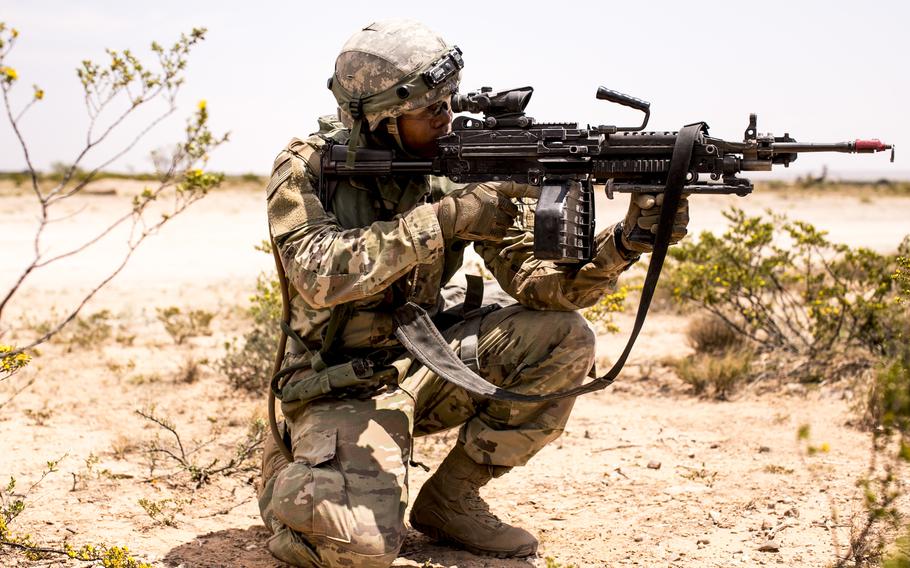
A soldier fires a M249 Squad Automatic Weapon during training in 2018 at Fort Bliss, Texas. (Tin P. Vuong/U.S. Army)
A soldier was wounded last month during training at Joint Base Lewis-McChord after live rounds were mixed with blanks, the Army said Tuesday.
“The injured soldier was admitted to Madigan Army Medical Center and is in stable condition,” said Lt. Col. Jennifer Bocanegra, an Army spokeswoman at Lewis-McChord, the Army-Air Force installation south of Tacoma in Washington.
The units involved in the April 25 training incident include the 1st Special Forces Group (Airborne) and the 7th Infantry Division. The soldier was injured by a live round fired from an M249 Squad Automatic Weapon. The group and division have soldiers based at Lewis-McChord.
Blank rounds that make a weapon feel and sound like it is firing a live round are used in training. A live round contains a bullet. A blank round does not.
Maj. Russell Gordon, a public affairs officer for 1st Special Forces Command at Fort Liberty, N.C., said the command issued a 72-hour stand-down this week of all ranges using live and blank ammunition. 1st Special Forces headquarters is in North Carolina, but the command has groups at several bases, including Lewis-McChord. The stand-down is for all the command’s units.
Each subordinate unit initiated a 24-hour amnesty turn-in period of any improperly stored ammunition followed by a complete inventory of all arms room ammunition storage locations.
Unit leaders were ordered to complete a review of all storage, handling and range safety responsibilities at all rank levels to ensure compliance with policies.
“Although an investigation is underway on the exact circumstances of the incident, it was necessary to take prudent action now to ensure the safety and wellbeing of everyone,” Gordon said.
According to Army weapons specifications, the M249 rifle is a gas-operated open-bolt automatic weapon that fires a NATO-standard 5.56x45 mm round. It has a muzzle velocity of 3,000 feet per second with a maximum range of 3,600 meters. Using a drum magazine or belt-fed, the rifle has a maximum rate of fire of 800 rounds per minute. Based on a Belgian design, it has been used by the U.S. Army since 1986 and is also used by the Marines.
No further information about the incident will be available until after the investigation is complete, Army officials said.